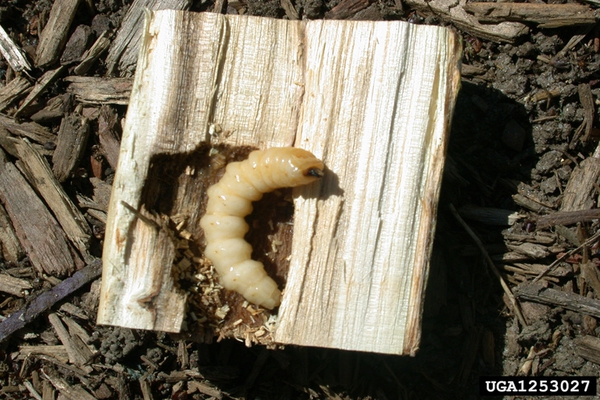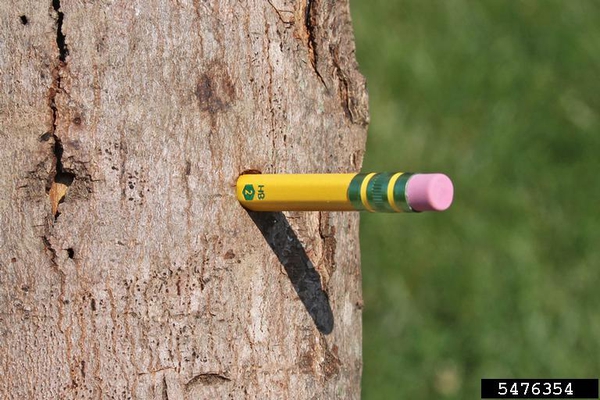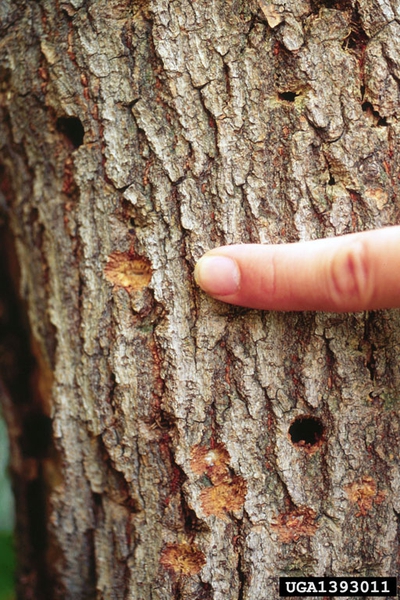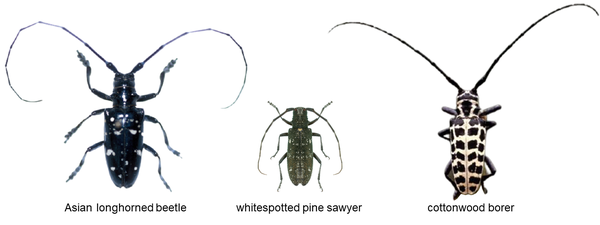Introduction
The Asian longhorned beetle (ALB; Anoplophora glabripennis) is a non-native invasive pest from Asia first detected in the United States in Brooklyn, NY in 1996. Like other invasive wood-boring insects, it likely arrived via wood shipping materials (e.g., crates, pallets, dunnage) used to transport goods. Since its initial detection in the United States, ALB has been detected in five additional states: Illinois (1998), New Jersey (2002), Massachusetts (2008), Ohio (2011), and South Carolina (2020). It has not been detected in North Carolina.
Tree mortality from ALB can cause devastating economic losses for homeowners, landowners, and the nursery industry. As evidenced by its erratic range expansion, ALB has proven repeatedly it can easily be transported long distances hidden within infested materials. Fortunately, eradication is possible but requires timely detection, a swift response, and years-long removal and monitoring of susceptible host trees.
Host Plants
ALB has a broad host range. In South Carolina, the closest infestation to North Carolina, it primarily infests red maple (Acer rubrum), the second most populous tree in North Carolina forests. ALB is also documented to attack other maples (Acer), birch (Betula), horse chestnut/buckeye (Aesculus), poplar (Populus), willow (Salix), elm (Ulmus), ash (Fraxinus), Golden raintree (Koelreuteria), mimosa (Albizia), Mountain ash (Sorbus), Katsura (Cercidiphyllum), and sycamore/London planetree (Platanus).
Life Cycle and Damage
Adult beetles (Figure 1) emerge in spring or early summer, chewing their way out of the tree and creating half-inch diameter, round exit holes (Figure 4). These exit holes are a conspicuous sign of ALB infestation. The “pencil test” is often conducted to confirm the diameter and depth of the exit hole: a pencil is stuck into the exit hole, matching its diameter and going in at least an inch (Figure 5). Adult ALB may feed on twig bark, which typically causes insignificant damage to the tree. After mating, females chew a ½- ¾”, oval divot or depression into the bark (Figure 6). These depressions are called egg niches, into which females insert an egg. Sap may ooze or foam from egg niches and can attract stinging insects or ants. Heavily infested trees can be covered in egg niches and exit holes.
Within two weeks, the larva (immature beetle) hatches and bores into the tree (Figure 2). Young larvae feed in the inner bark (phloem) and outer wood (xylem), disrupting nutrient and water transport in the tree. As they mature, they make larger and larger tunnels and travel deeper into the xylem and heartwood (Figure 7). Stringy sawdust or shavings often collects at the base of the tree or on branches and branch unions directly beneath larval feeding sites (Figure 8). They pupate within the tree and emerge several weeks later as an adult.
Larvae are the most damaging stage of this insect. Feeding by ALB larvae causes extensive branch dieback and breakage (Figure 9) and wilting or off-season yellowing of leaves. Because this activity occurs inside the tree, it is important to detect external signs and symptoms or the adult itself. When trees are attacked year after year, extensive girdling can cause in tree death in several years.
As a new arrival in the warmer southern climate, the precise timing of ALB’s life cycle in southern states is not well understood but is currently being investigated by researchers.

Figure 4. Heavily infested trees can be covered with exit holes and/or egg niches.
Kelly Oten CC BY 4.0
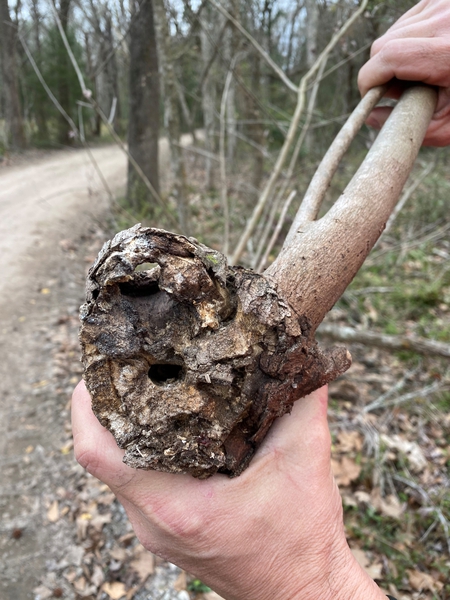
Figure 7. As ALB larvae grow, they bore deeper into the wood and their tunnels grow larger.
Kelly Oten CC BY 4.0
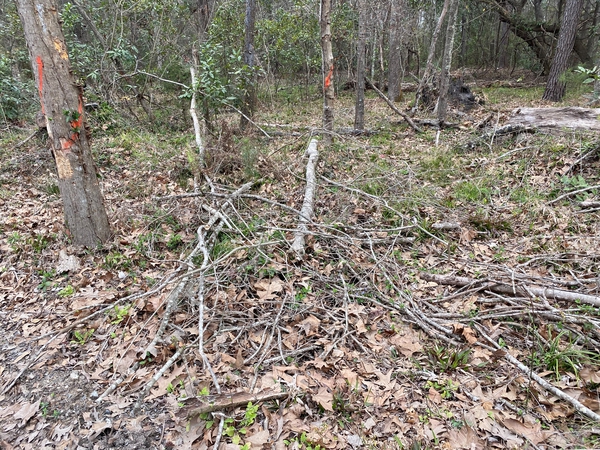
Figure 9. Feeding by ALB larvae reduces the structural integrity of branches and stems and can lead to extensive branch breakage.
Kelly Oten CC BY 4.0
Identification
Adult ALB are shiny black with white spots on their backs. They are large (¾ – 1 ½ inches long) with white and black banded antennae that can be up to twice the length of their body. While alive, the feet of the insect appear blue (Figure 1).
Larvae are cream-colored, legless, and reach 2 inches in length at maturity (Figure 2). Because their activity is inside the tree, they are not visible without extensive investigation into the tree.
There are several ALB lookalikes in North Carolina (Figure 10). The cottonwood borer closely resembles ALB in that it is a large beetle with both has a black and white spotted body and long antennae. However, the cottonwood borer has much more white in its coloration and its antennae lack the white bands present on ALB. Other commonly mistaken beetles are pine sawyer beetles, which also have long antennae but are much smaller and do not have a vivid black and white pattern. One species, the whitespotted pine sawyer, has a single white spot at the base of the wing covers.
Range Expansion and Quarantine
While adult beetles can disperse on their own, by and large, their introduction to new areas depends on movement of infested materials by human activities. As a result, the range expansion of ALB includes astonishing jumps, popping up hundreds of miles from the nearest known infested areas. For example, the most-recently detected infestation in South Carolina is approximately 600 miles from the nearest known infestation in southwestern Ohio. In addition to infested sites in the United States, ALB was also detected in Ontario, Canada in 2003. ALB is also present in Europe, where it was first detected in 2001.
ALB and many other non-native invasive species (e.g., emerald ash borer, redbay ambrosia beetle) can be accidentally transported in infested wood material. Therefore, it is highly recommended that untreated firewood be burned within 50 miles of where it was cut. If firewood must be transported, heat-treated or kiln-dried firewood should be used.
When ALB is detected in a new area, state and federal quarantines are established to regulate movement of ALB-infested material and reduce its spread.
Management
When new infestations of ALB are detected, the U.S. Department of Agriculture – Animal and Plant Health Inspection Services (USDA-APHIS) immediately responds. The goal is eradication. At each site, USDA-APHIS partners with local government agencies and universities to perform extensive surveys to determine the extent of the infestation and conduct eradication management measures. To date, eradication consists entirely of removing and chipping infested host trees (Figure 3, Figure 11). Because USDA-APHIS works towards eradication which includes removing infested trees on private property, home and landowners are not required to manage for ALB themselves.
Anyone who sees or suspects ALB should report it immediately to their state plant protection agency. In North Carolina, suspect ALB infestations should be reported to the North Carolina Department of Agriculture and Consumer Services’ Plant Industry Division by using their online reporting tool or sending an email with a photo and location information to badbug@ncagr.gov.
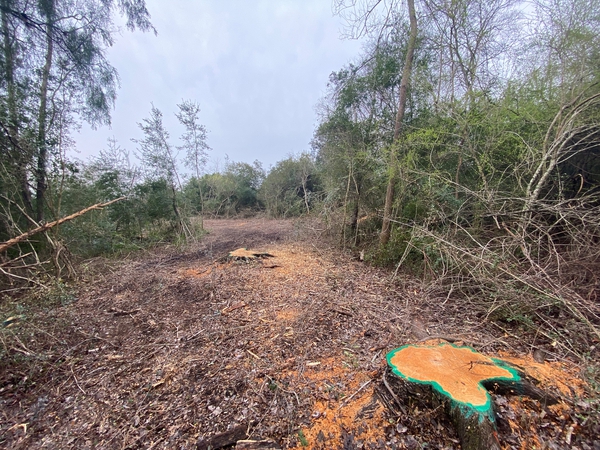
Figure 11. While not attractive, tree removal can be very effective in ALB eradication.
Kelly Oten CC BY 4.0
Other Resources
Publication date: April 12, 2021
N.C. Cooperative Extension prohibits discrimination and harassment regardless of age, color, disability, family and marital status, gender identity, national origin, political beliefs, race, religion, sex (including pregnancy), sexual orientation and veteran status.


